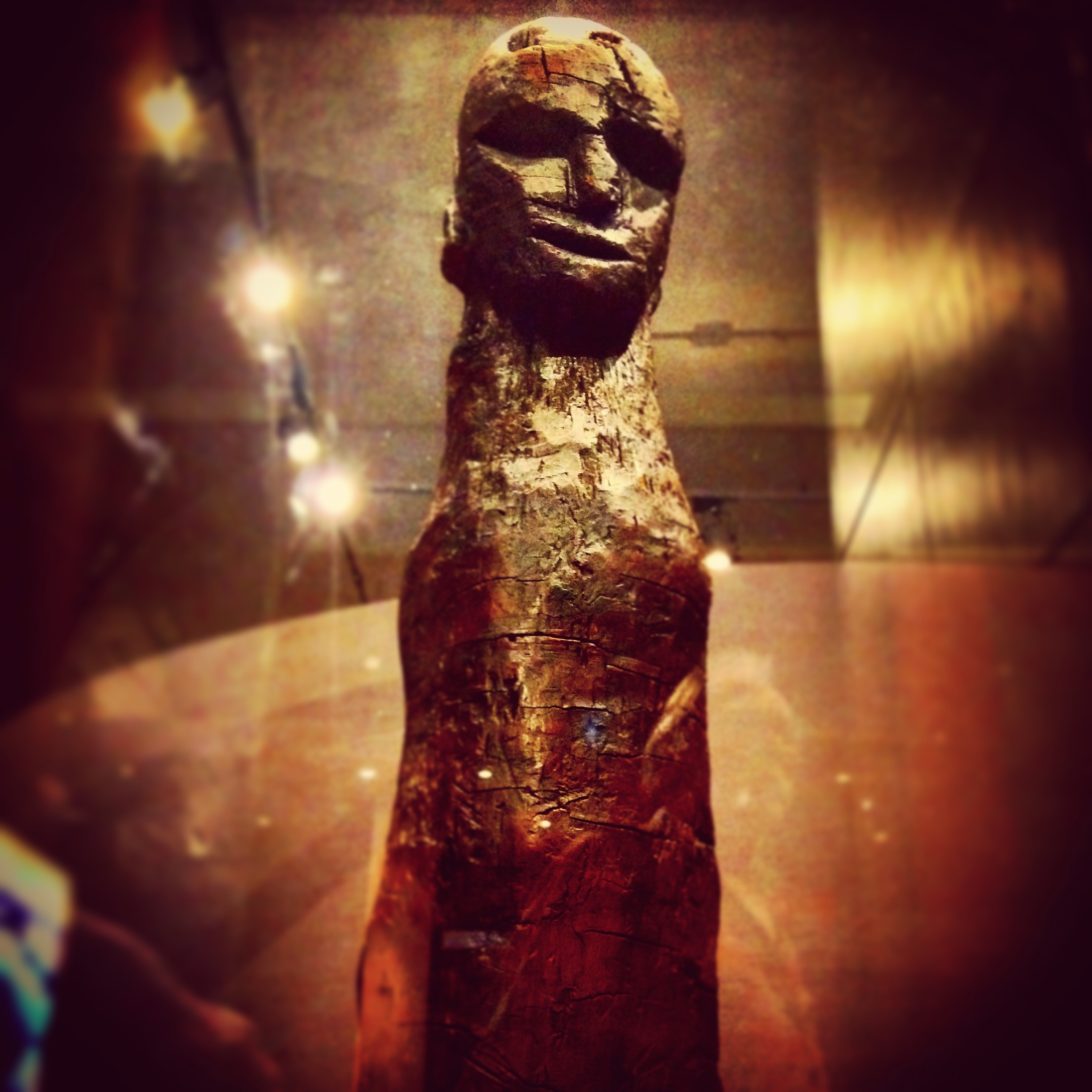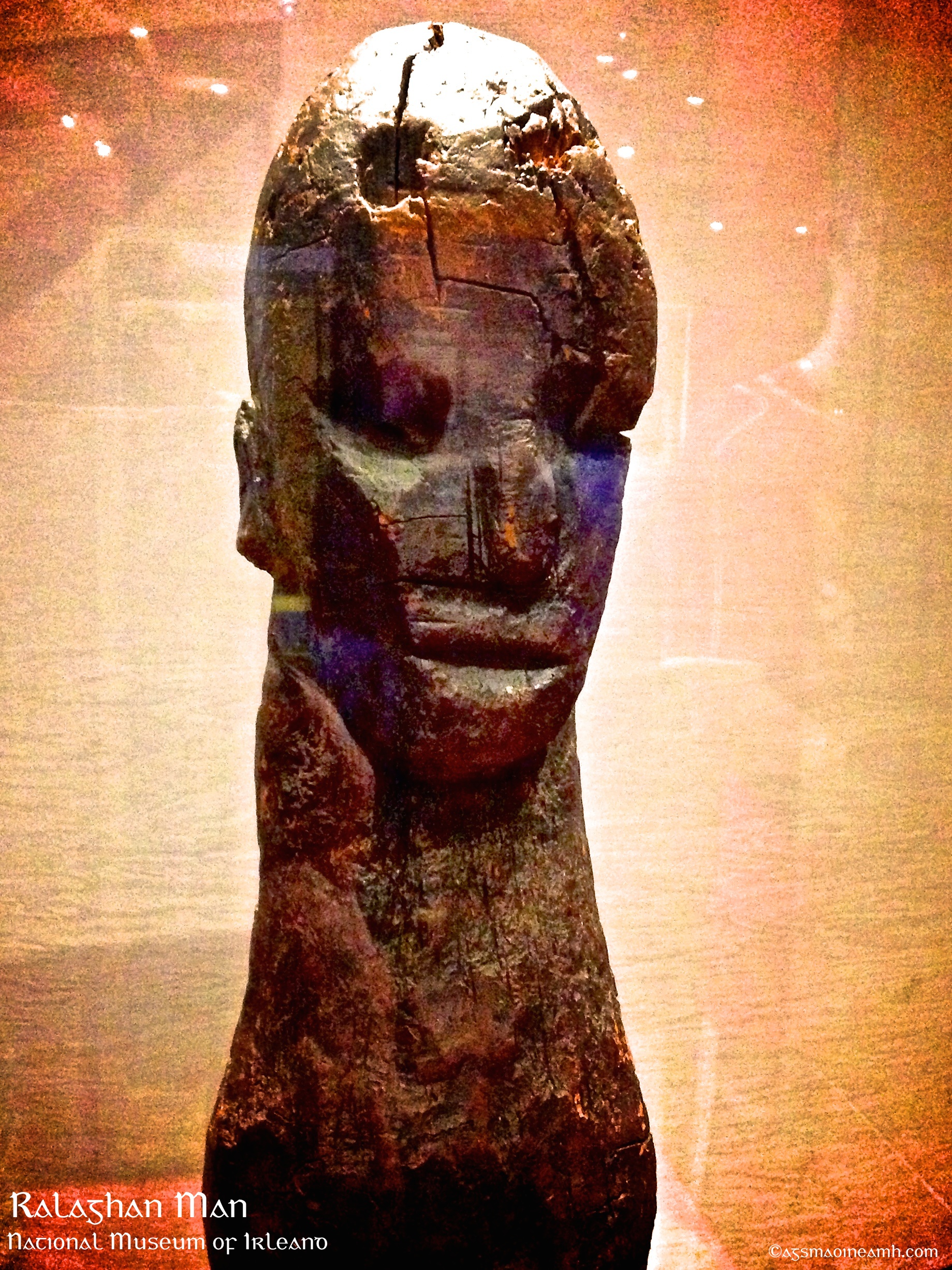Ralaghan Man on:
[Wikipedia]
[Google]
[Amazon]
 The Ralaghan idol, also known as the "Ralaghan figure", is a late
The Ralaghan idol, also known as the "Ralaghan figure", is a late

 The figure was found during turf cutting in a small peat bog close to the townland boundary between Ralaghan and Crossmakeelan, in the
The figure was found during turf cutting in a small peat bog close to the townland boundary between Ralaghan and Crossmakeelan, in the
 The Ralaghan idol, also known as the "Ralaghan figure", is a late
The Ralaghan idol, also known as the "Ralaghan figure", is a late Bronze Age
The Bronze Age is a historic period, lasting approximately from 3300 BC to 1200 BC, characterized by the use of bronze, the presence of writing in some areas, and other early features of urban civilization. The Bronze Age is the second pri ...
anthropomorphic
Anthropomorphism is the attribution of human traits, emotions, or intentions to non-human entities. It is considered to be an innate tendency of human psychology.
Personification is the related attribution of human form and characteristics t ...
, carved wooden figure found in a bog in the townland of Ralaghan
Ralaghan is a townland located outside Shercock, County Cavan in Ireland.
Ralaghan Man
In 1908 a rare, carved anthropomorphic figure, which has been named Ralaghan Man
The Ralaghan idol, also known as the "Ralaghan figure", is a late Bronze Ag ...
, County Cavan
County Cavan ( ; gle, Contae an Chabháin) is a county in Ireland. It is in the province of Ulster and is part of the Border Region. It is named after the town of Cavan and is based on the historic Gaelic territory of East Breffny (''Bréifn ...
, Ireland. It is held by the National Museum of Ireland
The National Museum of Ireland ( ga, Ard-Mhúsaem na hÉireann) is Ireland's leading museum institution, with a strong emphasis on national and some international archaeology, Irish history, Irish art, culture, and natural history. It has thr ...
.
A sample of wood from the figure yielded a Radiocarbon
Carbon-14, C-14, or radiocarbon, is a radioactive isotope of carbon with an atomic nucleus containing 6 protons and 8 neutrons. Its presence in organic materials is the basis of the radiocarbon dating method pioneered by Willard Libby and co ...
date (OxA–1719) of 1096–906 cal. BC.Waddell (1998), p.233
Discovery

 The figure was found during turf cutting in a small peat bog close to the townland boundary between Ralaghan and Crossmakeelan, in the
The figure was found during turf cutting in a small peat bog close to the townland boundary between Ralaghan and Crossmakeelan, in the civil parish
In England, a civil parish is a type of Parish (administrative division), administrative parish used for Local government in England, local government. It is a territorial designation which is the lowest tier of local government below district ...
of Shercock, County Cavan
County Cavan ( ; gle, Contae an Chabháin) is a county in Ireland. It is in the province of Ulster and is part of the Border Region. It is named after the town of Cavan and is based on the historic Gaelic territory of East Breffny (''Bréifn ...
, Ireland. Its discovery was announced in 1930 in the journal ''Antiquity'' by Adolf Mahr
Adolf Mahr (7 May 1887 – 27 May 1951) was an Austrian archaeologist, who served as director of the National Museum of Ireland in Dublin in the 1930s, and is credited with advancing the work of the museum substantially. Through his leadership ...
, keeper of Irish Antiquities in the National Museum in Dublin
Dublin (; , or ) is the capital and largest city of Ireland. On a bay at the mouth of the River Liffey, it is in the province of Leinster, bordered on the south by the Dublin Mountains, a part of the Wicklow Mountains range. At the 2016 ...
. Mahr reported that the figure was found face down "''under 3 to 4 feet of peat in an area of bog that had been "reclaimed since". No associated archaeological structures were reported, and Mahr reported that no other finds were retrieved from the bog.
Description
The figure is 113.5cm long and made from yew (''Taxus baccata
''Taxus baccata'' is a species of evergreen tree in the family
Family (from la, familia) is a group of people related either by consanguinity (by recognized birth) or affinity (by marriage or other relationship). The purpose of the famil ...
''), a toxic wood with multiple folkloric associations. It is carved from a complete roundwood stem. It has a carved head and neck, a long torso with no arms, breasts or navel, a well defined pubic area and a pair of slightly bent legs that feet. The base of the figure ends in a spike and it initially fitted into "a socket cut in a square block-shaped pedestal, about a square foot in area" which Mahr reported "is now lost".
Although covered in cracks, the figure has strongly incised facial features. The left eye is slightly higher than the right, with the nose off-centre and possible damage to the left of the face. The pubic area features a gouged hole (initially reported as drilled) placed within a well defined pubic triangle. An examination of the figure by Bryony Coles published in 1990, determined that the pubic hole widens within the body of the figure and that it contained a small patch of white granular material, possibly quartz.
Mahr initially determined that the pubic hole was "obviously intended for the insertion of a male organ". The idea that the figure originally featured a separate insertable phallus made of wood or some other material has been suggested by several scholars. Others have argued that the figure might be female or deliberately gender ambiguous. Coles has suggested that the pubic hole could have been a "hole for intercourse or giving birth", for the insertion of a separate phallus, or that the figure may have been "deliberately intended to be ambiguous, male in one context and female in another". Similarly, Miranda Aldhouse-Green
Miranda Jane Aldhouse-Green, (''née'' Aldhouse; born 24 July 1947) is a British archaeologist and academic, known for her research on the Iron Age and the Celts. She was Professor of Archaeology at Cardiff University from 2006 to 2013. Until ...
has argued that the figure may reflect "deliberate ambiguity and double-meaning". The figure is one among a number of prehistoric wooden figures with both male and female sexual characteristics or whose intended gender is unclear. These include the Dagenham idol, the "God Dolly", and the Roos Carr figures.
See also
*Anthropomorphic wooden cult figurines of Central and Northern Europe
Anthropomorphic wooden cult figurines, sometimes called pole gods, have been found at many archaeological sites in Central and Northern Europe. They are generally interpreted as cult images, in some cases presumably depicting deities, sometimes wi ...
* Dagenham idol - similar wooden figure found close to London in 1922
References
Sources
* Rynne, Etienn. "The Three Stone Heads at Woodlands, near Raphoe, Co. Donegal". ''The Journal of the Royal Society of Antiquaries of Ireland'', volume 94, no. 2, 1964. * Waddell, John. ''The Prehistoric Archaeology of Ireland''. Galway: Galway University Press, 1998. {{isbn, 978-1-8698-5739-4 Archaeological artifacts Bronze Age Ireland Irish art